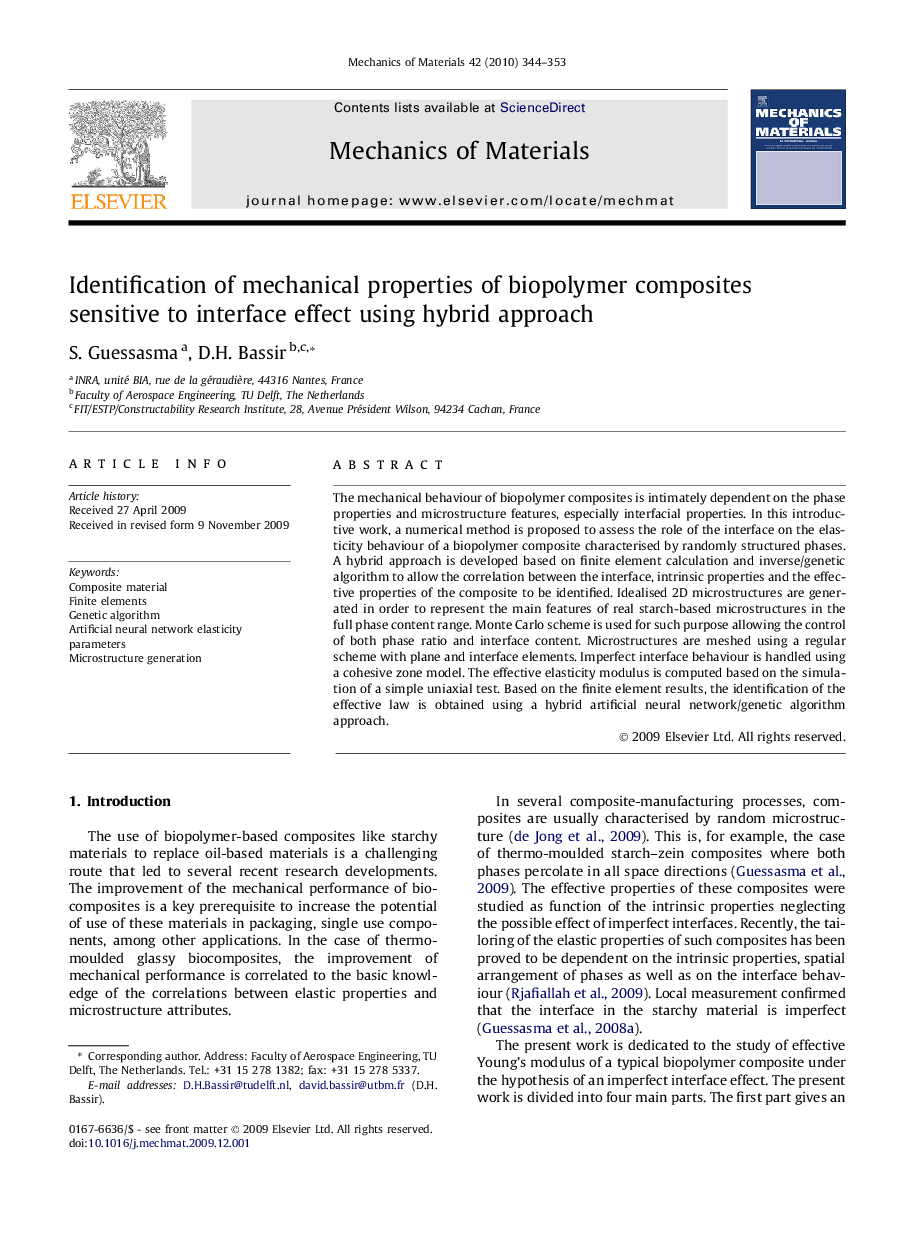| Article ID | Journal | Published Year | Pages | File Type |
|---|---|---|---|---|
| 800034 | Mechanics of Materials | 2010 | 10 Pages |
The mechanical behaviour of biopolymer composites is intimately dependent on the phase properties and microstructure features, especially interfacial properties. In this introductive work, a numerical method is proposed to assess the role of the interface on the elasticity behaviour of a biopolymer composite characterised by randomly structured phases. A hybrid approach is developed based on finite element calculation and inverse/genetic algorithm to allow the correlation between the interface, intrinsic properties and the effective properties of the composite to be identified. Idealised 2D microstructures are generated in order to represent the main features of real starch-based microstructures in the full phase content range. Monte Carlo scheme is used for such purpose allowing the control of both phase ratio and interface content. Microstructures are meshed using a regular scheme with plane and interface elements. Imperfect interface behaviour is handled using a cohesive zone model. The effective elasticity modulus is computed based on the simulation of a simple uniaxial test. Based on the finite element results, the identification of the effective law is obtained using a hybrid artificial neural network/genetic algorithm approach.
